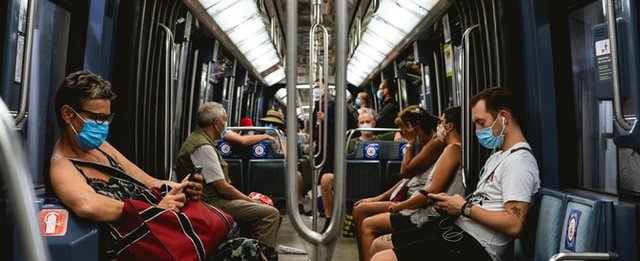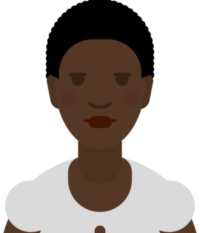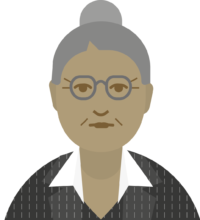
Who’s using mobility data? What are they using it for? And, what challenges are they facing?
In our first blog post on this topic, we outlined what mobility data is currently being published in response to the Covid-19 pandemic. To build on this, we conducted desk and user research to understand who was using mobility data and the challenges they were facing. The initial research demonstrated that:
- Mobility data is being published by a range of organisations, from local authorities to large international technology companies.
- Mobility data is being used by researchers, journalists, public health officials and local government to respond to Covid-19.
- The value of mobility data is not being fully captured due to users’ needs not being met.
We have created these user personas to explore the individual needs of mobility data users, to demonstrate that one-size-fits all policies are not fit for purpose.
These personas should equip people and organisations – from both the public and private sector – with a framework to understand the purpose of publishing data. They will also be useful in personifying the changing needs for mobility data as the response to the pandemic changes. For example, one interviewee described how initially mobility data was urgently needed by central government and public health bodies for modelling purposes, whereas now the shift in use is towards people and organisations wanting to understand the extent of economic recovery. If and when more lockdowns (whether national, regional or local) are needed, then it is likely that the needs may revert back.
These personas were created through either interviews or desk research. They are intended to be a starting point, and will continue to be developed with more interviews and research.
Key findings
The most frequent complaint that came up in our research and interviews was the lack of historic data. For many, the data about movement of people is only valuable if it can be directly compared with the data from the same date and location in a previous year. Without context from previous years, it is difficult to gain any meaningful insights from the data and know whether the figures are atypical.
Access to data is an ongoing difficulty. Public officials and researchers would benefit from data held by private sector companies, but do not necessarily have the budget to purchase their offerings. To understand the needs of data users and find ways of sharing data to help understand the virus and protect people, there needs to be ongoing collaboration attempts between public and private sector organisations.
Mobility data needs to be published in a way that suits organisations’ intended audience. Organisations which hold data need to understand whether they are publishing to inform the public, to support public health policy, or to demonstrate local situations. These personas demonstrate the different data needs of people, dependent on what they are trying to achieve.
The personas
Rae, researcher

Bio and motivations:
Rae is working on a research project to understand the effects of the Covid-19 pandemic on the movement of people. They are likely doing some research either individually, or in a small team at an academic institution.
Information needs:
- Rich data: The data necessary for these kinds of studies is typically large and detailed. Rae has the expertise to be able to analyse complex data. They are therefore always pushing for new and exciting untapped data sources, such as from new technologies or transport systems.
- Standardised data: To enable comparisons – for example across a city, country, or worldwide – it is easier for researchers if different areas release data that can be compared. This means the same formats and methodologies are helpful (if not currently widespread).
- Historic data: Researchers like Rae need to be able to access comparable data from previous years to understand the baseline of how many people are typically moving, so they can spot trends, peaks and troughs.
Uses of the data:
- Researching to compare the effects of the lockdown between different areas or countries and the subsequent impacts on mobility.
- Rae also works collaboratively with a local government organisation to share data and insight, as the partnered local authority lacks the resources to do significant data analysis itself.
Challenges of using mobility data:
- Access to data: Rae often relies on the goodwill of data holders to share the data they need, unless there is funding for collaboration.
Jackie, journalist

Bio and motivations: Jackie and other journalists are instrumental in the public's understanding of what is going on with the pandemic. They therefore need to use and present data in a way that a diverse range of readers can understand and process. Journalists can also hold politicians and public officials to account, and challenge any decisions – or lack thereof. Jackie focuses on looking for stories, and is interested in spotting spikes in cases, rule breaking and comparisons.
Information needs:
- Simple data interface: Jackie looks to find a simple message from the dataset. For example, a dashboard that can be explored with easy-to-digest data. Some newspapers will have their own style guide and visualisation themes, so having access to data is useful. Others may be happy to use pre-made visualisations to save them from having to do their own analysis.
- Frequently updated data: To both educate and challenge, Jackie needs data that is reliable, comparable and updated frequently. The situation is changing all the time, therefore it isn’t very useful for Jackie if publishers release data infrequently, or with a time lag between collection and publication.
- Historic data: Jackie needs to be able to access comparable data from previous years to understand the baseline of how many people are typically moving, so she can spot trends, peaks and troughs.
Uses of the data:
- Writing articles about topics such as whether people are following government stay-at-home advice and the state of economy.
- Asking government ministers and public health officials informed questions about government policy on the movement of people.
Challenges of using mobility data:
- Format: Datasets from different publishers are collected using different methodologies.
- Time: Journalists do not usually have the luxury of being able to spend weeks or months writing a long article.
- Access to data: In most cases, journalists rely on open data being published by the public and private sector. They do not have access to their own managed infrastructure, or have many levers outside of freedom of information powers to compel or encourage data sharing.
- Skills: The skill level will depend on what their specialism is. Jackie is a tech journalist, with some data skills – she can understand, clean and analyse different datasets. It is not uncommon for her colleagues to have very basic digital literacy skills.
Lola, local government worker

Bio and motivations: The pandemic is very much a local issue that affects areas differently. People in local government, like Lola, understand their area and its makeup and challenges better than the national government. They therefore need local data. They may be coordinating responses with different departments, including transport and the police, such as to the need for a local lockdown.
Information needs:
- Local data: To understand how many people are moving in the area – and where they’re moving to and from – Lola requires local mobility data. Lola has access to data that her organisation already manages – such as traffic data (for example SCOOT), traffic cameras and footfall sensors – or from data that they can get access to, such as through Business Improvement Districts or public-private partnerships. Previously, she has been able to negotiate access to datasets from private companies, such as by granting licences for scooter hire in the area on the condition they share usage data in return.
- Compatible data: Any external data will need to be able to be compatible with the systems she already has in place. One interviewee said that the last thing they need is another dashboard that they have to check. This suggests that building APIs that fit into existing systems would be worthwhile.
- Historic data: Lola needs to be able to access comparable data from previous years to understand the baseline of how many people are typically moving, so she can spot trends, peaks and troughs.
Uses of the data:
- Lola makes critical decisions during the pandemic about transport planning, the local economy and health responses. She often works in conjunction with others.
Challenges of using mobility data:
- Resources: During the pandemic especially, local authorities have been focused on emergency responses and therefore haven’t had much opportunity to test new data sources.
- Skills: Local authorities differ in size, from tiny all the way up to large city authorities and combined regional authorities. Along the same lines, they will also differ in budget, skills and resources.
- Some data is collected by national authorities and not shared with regional or local authorities. There is often not a lot of collaboration between different public bodies.
Pascal, public health policy official

Bio and motivations:
- Public health officials are crucial in the planning and response to health emergencies. Pascal is using data to track the spread and risk of the disease.
- Pascal needs access to mobility data to understand the likelihood of new hotspots for the virus. He needs to see both where more people are crossing paths (and therefore more likely to spread the virus) and where people from existing virus centres may have travelled to. This helps him answer questions about where and when the virus is spreading, such as when and where cases have developed from.
Information needs:
- Adaptable data: Pascal uses data from multiple sources, therefore a data visualisation or a dashboard is almost useless to him. Instead, he needs datasets to fit into their existing models. The data needs to be reliable and able to be used in conjunction with other data sources, such as from symptom trackers, national health statistics and test results.
- Comparable data: Data from different local areas, for example footfall or traffic data, should be collected by different local authorities using the same methodologies and published in the same format at the same frequency.
- Macro-level data: He is more likely to be looking at data about the volumes of people moving and where they are moving to, rather than the specifics of whether people are adhering to social distancing guidelines.
Uses of the data:
- Using statistics and models to guide preventative policies.
Challenges of using mobility data:
- Data is coming from different sources with different frequencies, with some updated hourly and some weekly. Pascal may need to invest in coordination activities within their ecosystem, or encourage others to do this coordination activity.
- Pascal may rely on data from commercial partners who would typically charge for access to the data.
- For public health, it is absolutely paramount that the data being used is reliable.
Conclusions and next steps
These personas can be used as a starting point for any data publisher to help understand who might be using their data and what their needs for the data are. We want people to take, use and test these personas.
The following are other personas that could be developed in the future, but we have not had opportunity to research during this phase of the project:
- National government worker
- Local police
- Internal analyst at private sector company
- More granular local government roles
We would appreciate any feedback as these remain a work in progress. If you have any comments, please get in touch.